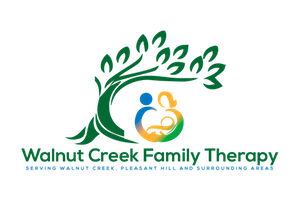2 Major Benefits of Journaling
The practice of journaling has a variety of benefits that can help you to heal as well as to achieve your goals. Two important goals that journaling can provide are: helping you to clarify your goals, and improving connection between the left and right side of your brain. These benefits can go a long way in moving you closer to the life that you desire.
1. One of the great benefits of journaling is the ability to clarify your goals. I find it beneficial to have three different categories: 1-2 year goals, 5-10 year goals and Long Term Goals (beyond 10 years). I find that it can be very motivating to start with the long-term goals in order to provide the most inspiration.
Long-term-goal setting is about finding your passion. The thing that gets you up in the morning and motivates you to face your day. This is not a time to think about reality or all of the limiting factors that make this goal seem impossible. That thinking will sap your passion right from the start. A long-term goal or vision should be a stretch, something that may not seem doable. And that is the whole point. Your 1-2 year and 5-10 year categories can begin to break things down into manageable chunks but the long-term goal provides the “Why”.
Why do I get up every day?
Why do I go to school every day and try for the best grades I can get?
Why do I keep working this job and saving my money?
Is it to provide my kids with the best life possible?
To travel to exciting and new destinations around the world?
To have an enjoyable and relaxing retirement?
Long-term goals provide the fire and when we lose sight of these we begin to lose motivation. Keeping these goals in focus keeps the necessary passion alive to face each day.
2. Journaling can serve to improve connection between the left and right side of the brain.
Journaling provides a focused opportunity to improve and repair the connection between the left and right side of the brain. The left side of our brain operates in logic and reason. The right side deals with feelings and creativity. Oftentimes when there are traumatic experiences these tow sides lose communication and begin to operate separately from each other.
An example of this is when someone engages in an irrational fear, such as avoiding traveling by airplane because they had a traumatic experience with flying in the past.
Logically, this person’s left side of the brain is aware of the high number of flights and the minimal number of accidents that occur. But the right side of the brain is feeling extreme fear, and a past trauma has created a “fight or flight” response. This response does not allow for effective communication between the right and left side of the brain.
Journaling may not heal all traumas, but it can begin to increase connection between these two parts of the brain.
I encourage clients to begin journals by writing from the “inner child’s” perspective: The feelings that are present in their right side of the brain. Focus only on feelings and give yourself adequate time to process all of the prominent feelings that are coming up. There is no need for any logic in this first part of this journal exercise. This may take as long as needed. It may be 5 minutes, and it may take 30 minutes, or more.
The next step is to go over these “inner child” concerns with the guidance of the “inner parent” or left side of the brain. This is the time to engage in logic and reasoning and to put any distorted thoughts “on trial.” Do they truly hold up?
It is important to be mindful of two key questions during this time: “Is this thought accurate?” and, “Is this thought helpful?”
Some things are simply not accurate and the left side of the brain will often recognize this right away. Other thoughts may be, or appear to be, accurate but are not helpful. They do not give you a productive direction or next step to pursue. An example of this may be, “I’m the worst student in my class at Math.” While this may be technically true, based on specific measures, the belief may not provide any helpful direction. Something like, “It takes me longer to understand some Math concepts, but I can get it when I put in the extra time,” may be a more helpful statement.
There are many benefits to making journaling a consistent practice. I have highlighted just two of these key benefits. Clarifying your goals and improving connection between the left and right side of the brain can be two highly motivating benefits to journaling. By addressing these areas you can go a long way in increasing the likelihood and efficiency of achieving your goals.

